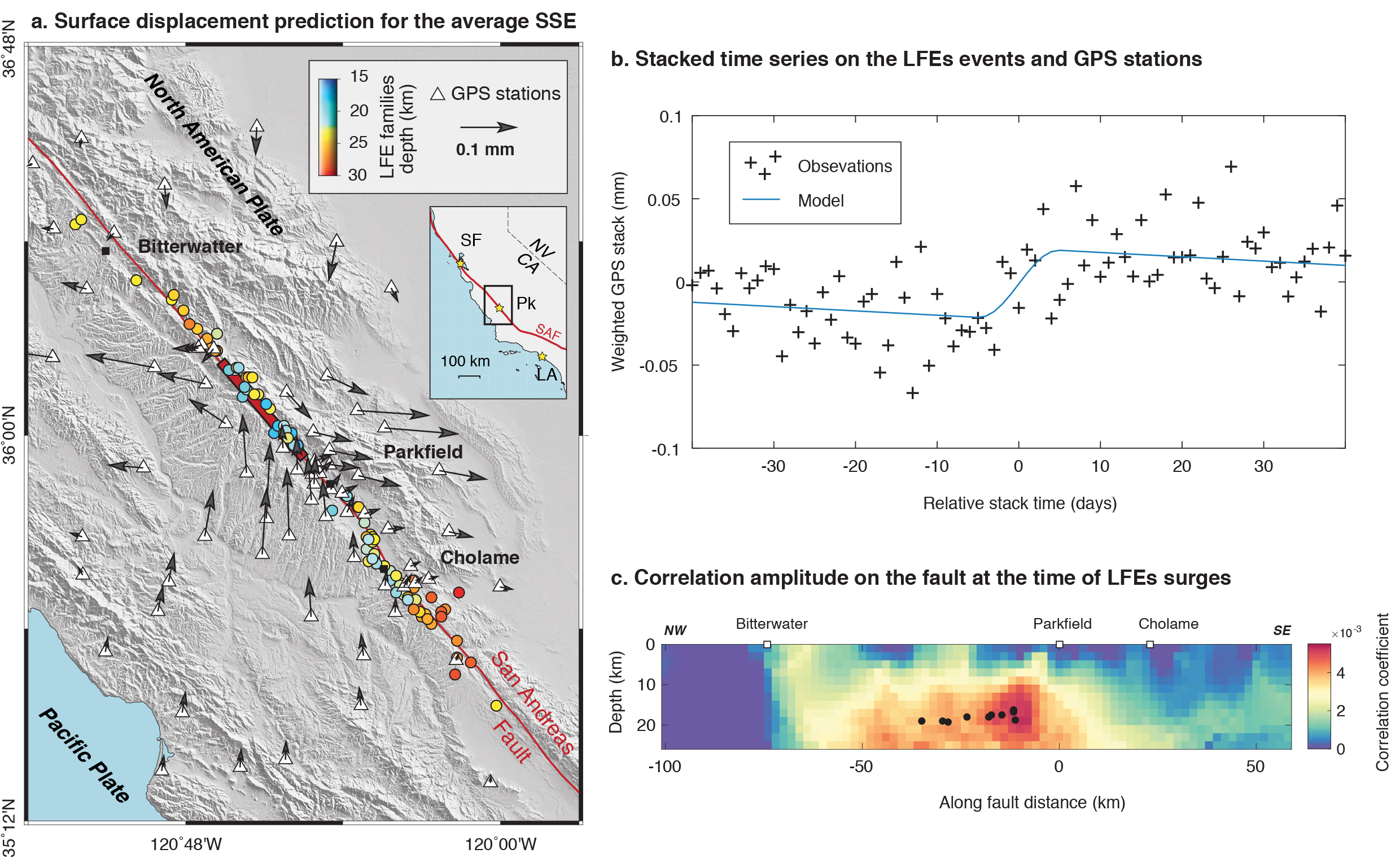
 |
|

Characterization of an average transient slow slip event of Mw 4.9 at the base of the seismogenic zone of the San Andreas Fault. (a) Surface displacement prediction for the average transient event characterized by summing 20 events. (b) GPS time series summed over 20 transient events and all GPS stations, north and east components. The blue curve indicates the best model, used to estimate the Mw of the average slow slip. (c) Amplitude of correlation on the fault plane, at the time corresponding to the peaks of low frequency earthquake activity. Black dots indicate the location of the low frequency earthquake families used in the study.
| Project Summary |
Episodic tremor and accompanying slow slip is observed at the down-dip edge of some subduction seismogenic zones. While tremors present the seismic signature of this phenomena, the majority of accumulated stress is aseismically released and thus the associated fault slip can only be quantified by geodetic observations. On continental strike-slip faults, tremors have been observed in the roots of the Parkfield segment of the San Andreas fault. However, associated transient aseismic slip has never been detected. By using the timing of transient tremor activity and taking advantage of the dense Parkfield-area global positioning system (GPS) network with more than a decade of continuously recorded position time series, we are able to detect and characterize the moment of average deep slow slip events (SSEs) on the Parkfield segment. The detection is made using a geodetic matched filter approach in which post-processed GPS time-series stacked over 20 transient events are correlated with synthetic dislocation fault slip models. SSEs with an average moment equivalent to Mw 4.90 ± 0.08 at 16 km depth are releasing ∼ 25% of the loading rate during 5.5% of the interseismic time. The detection of these transient slow slip events located at the northern down-dip edge of the Parkfield locked asperity, at the transition with the creeping section of the San Andreas Fault, provides new constraints on the understanding of the Parkfield seismic cycle.
|
| Tools | GPS position time series and low frequency earthquakes |
| Geographic Location | Parkfield, California |
| Group Members Involved |
Baptiste Rousset <Email> <Personal Web Site> Roland Bürgmann |
| Project Duration | 2017 - 2019 |
| More Information | Science Advances article < rousset et al., 2019 > |